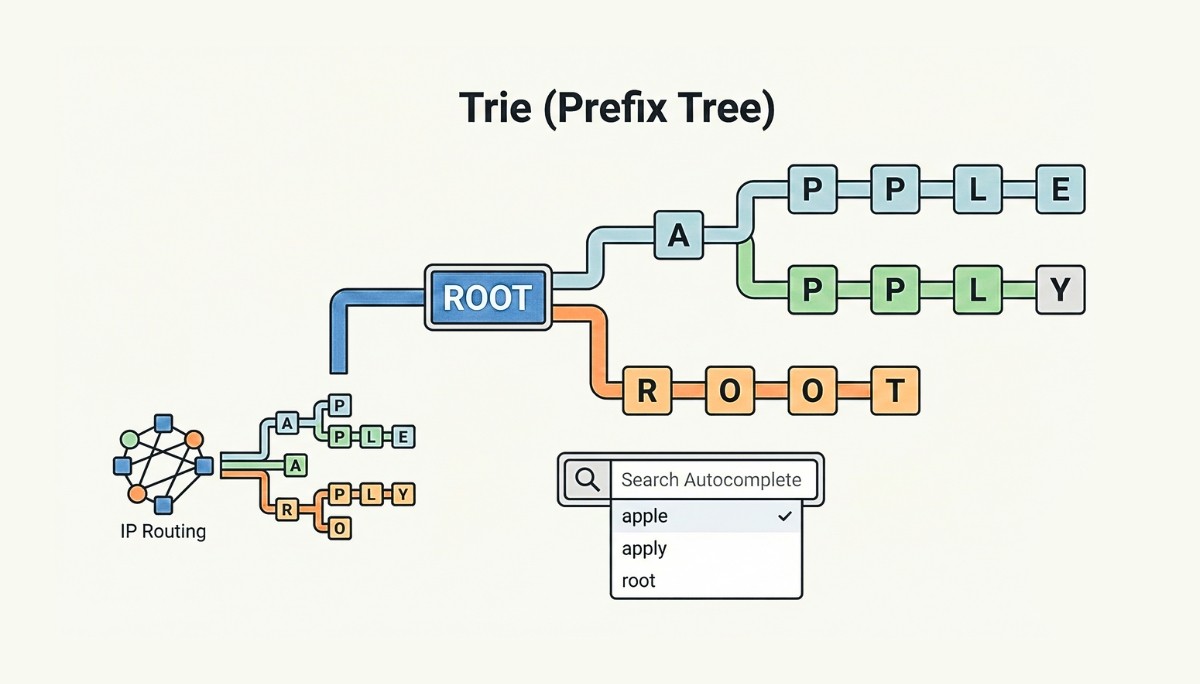Why Software Project Planning Is the Key to Successful Development
By
Liz Fujiwara
•
Sep 16, 2025
The success of a software project depends largely on effective planning, which serves as the foundation for achieving project goals on time and within budget. Proper planning involves gathering detailed requirements, defining the project scope, creating a realistic budget, allocating resources efficiently, managing risks proactively, and ensuring high-quality outcomes. By addressing these factors early in the project lifecycle, teams can prevent common pitfalls such as missed deadlines, cost overruns, and subpar deliverables. This comprehensive approach not only keeps projects on track but also ensures that the final product meets user expectations and provides lasting value.
Key Takeaways
Effective software project planning greatly increases the chances of success by improving timelines, staying within budgets, and reducing risks.
Key elements of successful planning include requirement gathering, clear project scope definition, comprehensive budgeting, strategic resource allocation, and proactive risk management.
Implementing a robust communication plan and a monitoring framework with defined KPIs ensures team alignment and supports informed decision-making throughout the project lifecycle.
The Importance of Software Project Planning

A well-crafted software development plan is the foundation of any successful project. It provides a clear roadmap from inception to completion, ensuring all team members are aligned with the project’s goals and objectives. Without a solid plan, even skilled development teams can face missed deadlines, budget overruns, and subpar quality.
Statistics show that 67% of failed software projects can be attributed to poor planning, highlighting its critical importance. Meticulous planning can reduce costs by up to 30% and improve budget adherence, ensuring projects are completed on time, within budget, and deliver high-quality software that meets user expectations.
A detailed software project plan acts as a blueprint for managing challenges during development, whether technical issues, changes in stakeholder requirements, or unexpected delays. It also facilitates better risk management, budgeting, and the setting of realistic deadlines.
Clear goals, a defined scope, and effective risk mitigation are fundamental components that help prevent scope creep and other common risks. Ultimately, a solid software development plan serves as a roadmap for timely and budgeted software delivery.
Software project planning lays the foundation for all subsequent project activities, from requirement gathering to risk management, steering the project efficiently through its lifecycle. The next step is understanding the specific components of effective project planning, beginning with requirement gathering.
Requirement Gathering: Setting the Foundation
Gathering software requirements is like laying the foundation of a building. Understanding user needs, conducting market research, and adhering to industry standards are essential for preventing misunderstandings and misalignments among stakeholders. This step ensures that everyone clearly understands what the project aims to achieve.
Regular stakeholder meetings help identify necessary materials and documentation requirements. These interactions clarify the project’s goals and objectives, providing direction and focus for the entire team. Clearly defined goals illustrate the project’s purpose and ideal endpoint, helping the team stay aligned and motivated. Engaging key stakeholders ensures that all perspectives are considered.
Documenting every aspect of the project is critical for successful software planning. The Software Requirement Specification (SRS) captures all product requirements throughout the project lifecycle, including technical specifications. Comprehensive documentation minimizes scope changes and delays, while proactive risk management helps reduce potential impacts on timelines and budgets.
Defining Project Scope: Avoiding Scope Creep
Clearly defining the project’s scope is essential, as it establishes the project’s foundation, clarifies boundaries, and outlines desired outcomes. The project scope should explicitly detail:
Features
Functionalities
Constraints
Exclusions
A well-defined scope helps prevent scope creep. When stakeholders request changes mid-project, it is important to:
Refer to the documented scope
Implement a change management process to evaluate any additions
Scope creep can derail up to 52% of software projects by expanding requirements without adjusting timelines or budgets, introducing significant risk. By focusing on specific deliverables, project teams can avoid unnecessary complications and ensure successful project completion.
Time Management: Breaking Down Tasks
Utilizing task breakdown techniques enables more accurate time estimations and efficient workload management. Breaking a software project into smaller tasks offers several benefits:
Enables better planning
Improves estimation accuracy
Facilitates resource allocation
Enhances organization and proficiency in project execution
Ensures each module is manageable and well-defined
Setting realistic deadlines for each module is essential to help teams understand their work scope and expectations. Project management software plays a vital role in tracking main tasks and subtasks in real time, facilitating workload management, prioritization, and deadline setting. Tools like Kanban boards provide a visual workflow, enhancing clarity and communication as tasks move through different stages.
Buffer time is crucial for managing unforeseen circumstances or complexities. Highlighting task interrelationships, dependencies, and activity sequences is key for effective planning. Preliminary estimates should consider task complexity and dependencies, ensuring timelines are realistic and achievable.
Accurate time estimation is critical for project success. Key practices include:
Using blind estimation techniques like Delphi Estimation or Planning Poker to gauge workload
Including contingencies for unforeseen complexities or additional scope to prevent schedule delays
Questioning estimates during planning to reflect on assumptions and reduce the risk of underestimating workload
Budgeting and Resource Allocation

A well-defined budget is a cornerstone of successful software project planning, helping track expenses and adjust plans as needed to ensure financial viability while optimizing team productivity.
Effective budget planning should account for both direct costs (e.g., salaries, software licenses) and indirect costs (e.g., overhead, infrastructure), providing a solid foundation for resource allocation and overall project management.
Comprehensive Budget Planning
Financial resources for a software project encompass expenses related to:
Personnel
Tools
Technologies
Infrastructure
Other development costs
Developing a comprehensive list of requirements is the first step in forming an accurate budget, ensuring all necessary expenses are accounted for and reducing the risk of overruns. Hidden costs can sometimes double initial estimates, so it is essential to identify potential expenses and implement contingency plans to manage unexpected costs effectively.
A clear understanding of project scope and requirements helps align strategies with budget constraints, keeping the project financially sustainable. Meticulous planning and realistic timelines are crucial, and tools like Gantt charts can provide visual representations of project schedules and resource allocation, supporting informed decision-making throughout the project lifecycle.
Strategic Resource Allocation
Effective resource allocation is essential for preventing bottlenecks and ensuring tasks are completed efficiently and on schedule. Aligning specific tasks with team members’ expertise and career goals enhances productivity while boosting morale, as individuals work on assignments that match their strengths and professional aspirations.
Clearly assigning roles and responsibilities within the software development team fosters accountability, collaboration, and clarity. Project management software can assist by tracking team availability, skill sets, and workloads, allowing project managers to optimize resource utilization and maintain project progress effectively.
Risk Management in Software Projects

Effective risk management is crucial in software development, encompassing the identification, prioritization, and mitigation of risks that could impact a project’s success. Conducting active risk assessments during the planning phase allows teams to anticipate potential challenges and develop strategies to address them.
By proactively managing risks, project teams can minimize disruptions, maintain project timelines, and ensure smoother progress toward delivering a successful software product.
Identifying Common Risks
Common project risks, such as budget overruns, security vulnerabilities, and the loss of key team members, can derail up to 67% of software projects. Categorizing risks into technical, operational, and business types allows teams to prioritize and manage them more effectively.
Conducting pre-mortems, which involve analyzing potential issues before the project begins, enables proactive risk mitigation. Including a contingency fund in the budget helps manage unexpected costs, while backup plans for critical personnel ensure project continuity. By addressing risks early, teams can minimize disruptions, maintain timelines, and keep the project on track.
Developing Mitigation Strategies
For each identified risk in a project, specific mitigation plans should be created to outline preventive measures and contingency strategies. Involving risk managers, project managers, and subject matter experts in assessing potential risks ensures that mitigation approaches are well-informed and effective. Developing strategies for identified risks helps manage challenges methodically and reduces the likelihood of project disruption.
A risks and issues log should be maintained, including a list of mitigations. Creating a documented risk management plan allows team members to address risks systematically and ensures that all potential issues are accounted for. Clarifying estimations for realistic stakeholder expectations mitigates inaccuracies, keeping the project aligned with its goals and timelines.
Communication and Collaboration Planning

Creating a communication plan in a software development project is essential for defining how and how often information will be shared. Poor communication can cause more delays than technical challenges, making it crucial to establish clear communication channels and protocols from the outset.
Effective software project planning improves team alignment and accountability, ensuring that all team members are coordinated and working toward common goals.
Establishing Communication Protocols
Key aspects of starting a software project include:
Articulating the software’s goals to ensure alignment among team members and stakeholders.
Aligning on the software development process to avoid confusion and ensure clarity.
Holding a productive project kick-off meeting to gather necessary information and set the project on the right path.
Assigning roles and responsibilities within the software development team to foster accountability and effective collaboration.
Frequent communication and knowledge sharing significantly reduce operational risks, ensuring that all team members are informed and engaged. Establishing clear channels and protocols is essential for maintaining consistent communication throughout the project. A communication plan should define information sharing methods, frequency, and modes, ensuring that updates and issues are communicated effectively. This structured approach promotes transparency and a collaborative project environment.
Tools for Effective Collaboration
Collaboration software often includes features that support real-time messaging and file sharing, reducing communication gaps within project teams. These tools enhance collaboration by providing a centralized platform for communication and documentation. Real-time messaging and file-sharing capabilities ensure all team members have access to the latest information and can work together effectively.
Resource management software helps track project progress, monitor resource availability, and optimize resource usage. These tools provide visibility into the project’s status and help identify potential bottlenecks and areas for improvement.
By leveraging collaboration and resource management tools, project managers can ensure the team is aligned and working efficiently toward project goals.
Quality Assurance and Testing Strategy
Quality assurance (QA) testing is a critical component of the software development lifecycle, ensuring that products meet established quality standards before release. Implementing a comprehensive QA strategy helps maintain high standards throughout the project.
This approach allows teams to identify and address defects or issues early, ensuring that the final product delivered to users is reliable, functional, and meets expectations.
Implementing QA Processes
A dedicated team of manual testers plays a key role in the quality assurance process, ensuring a thorough evaluation of the software. During QA, the following steps are performed:
Product defects are identified and logged
Defects are tracked
Defects are corrected
Corrected defects are retested to ensure all issues are resolved
This systematic approach maintains the quality and reliability of the software.
Implementing QA processes involves a combination of manual and automated testing tailored to the software’s specific requirements. Comprehensive unit testing verifies the correctness of the code, while integration tests validate the functionality of newly added features. This thorough testing process ensures that the software meets all quality standards before release.
Continuous Testing and Feedback
Continuous testing is essential for evaluating a product in a real business environment before full release. The process includes:
Conducting user testing after feature development to assess effectiveness and gather insights
Collecting post-launch feedback to identify areas for improvement and potential enhancements
Incorporating insights from user testing into the Software Development Plan to ensure continuous improvement
User Acceptance Testing (UAT) evaluates software under real-world conditions to confirm it meets user needs prior to launch. This final QA step ensures the software is ready for deployment and aligns with user expectations.
By integrating continuous testing and user feedback into the software development process, teams can deliver high-quality software that effectively meets user needs.
Monitoring and Evaluation Framework
An effective monitoring and evaluation framework provides a structured guide for assessing project performance and achieving objectives. Using project management tools to track progress and monitor key performance indicators (KPIs) is essential for maintaining alignment with business goals.
This approach enables project teams to make informed decisions and continuously improve their processes.
Setting KPIs and Metrics
Key points for effective project management include:
Clearly defining key performance indicators (KPIs) and linking them directly to the project’s objectives to accurately measure outcomes.
Ensuring data collection methods align with the selected KPIs to gather reliable and actionable information.
Regularly reviewing the budget throughout the project lifecycle to confirm alignment with actual expenditures.
Providing regular updates on team performance to identify areas for improvement in resource allocation. Using insights from KPI assessments, project managers can make informed decisions for project enhancements and future initiatives. This structured approach to monitoring and evaluation helps maintain project alignment and achieve success.
Post-Deployment Evaluation
Conducting a post-project review is essential for gathering insights and lessons learned to improve future projects. A comprehensive review should document successes, challenges, and areas for improvement. Neglecting this step can lead to costly inefficiencies in subsequent projects, underscoring its importance in the project lifecycle.
By performing a thorough post-deployment evaluation, project teams can continuously refine their processes and deliver higher-quality software products. This reflective approach helps identify best practices and avoid common pitfalls in future projects.
Introduction to Fonzi
Fonzi is an innovative recruitment platform that connects companies with pre-vetted AI engineers during structured hiring events called Match Day. This curated AI engineering talent marketplace ensures businesses can find the right talent quickly and efficiently.
How Fonzi Works
Fonzi uses a structured candidate evaluation process that includes:
Defining clear job roles and requirements to align candidates with business needs
Delivering high-signal, structured evaluations
Incorporating built-in fraud detection
Performing bias auditing
This process ensures that only the most qualified candidates are presented, streamlining hiring and reducing the time and effort required to find the right talent.
Benefits of Using Fonzi
Fonzi provides scalable hiring solutions for companies of all sizes, from startups to large enterprises. The platform guarantees high-quality candidates by matching skills with business requirements, resulting in better job fits and more successful hires. Most hires happen within three weeks, and the candidate experience is preserved and enhanced, ensuring engagement and strong matches.
By leveraging Fonzi, companies can streamline talent acquisition and build effective development teams capable of executing project plans successfully.
Why Software Project Planning Is the Key to Successful Development

Software project planning is crucial for success as it helps improve timelines, adhere to budgets, and reduce risks. Effective planning encompasses:
Requirement gathering
Defining project scope
Budgeting
Resource allocation
By setting clear goals and objectives from the start, project teams can stay on track and meet their targets.
By continuously monitoring and evaluating processes, project teams can make informed decisions and deliver high-quality software products that meet user needs. Meticulous planning is the key to achieving project success and delivering software that exceeds expectations in IT projects.
Summary
In conclusion, software project planning is the cornerstone of successful software development. Investing time and effort into detailed planning enables project teams to meet timelines, stay within budget, and deliver high-quality products. From requirement gathering and defining project scope to budgeting, resource allocation, risk management, and quality assurance, each aspect of planning plays a vital role in ensuring project success. By following these best practices and leveraging innovative platforms like Fonzi, companies can build strong development teams and achieve their project objectives efficiently.




